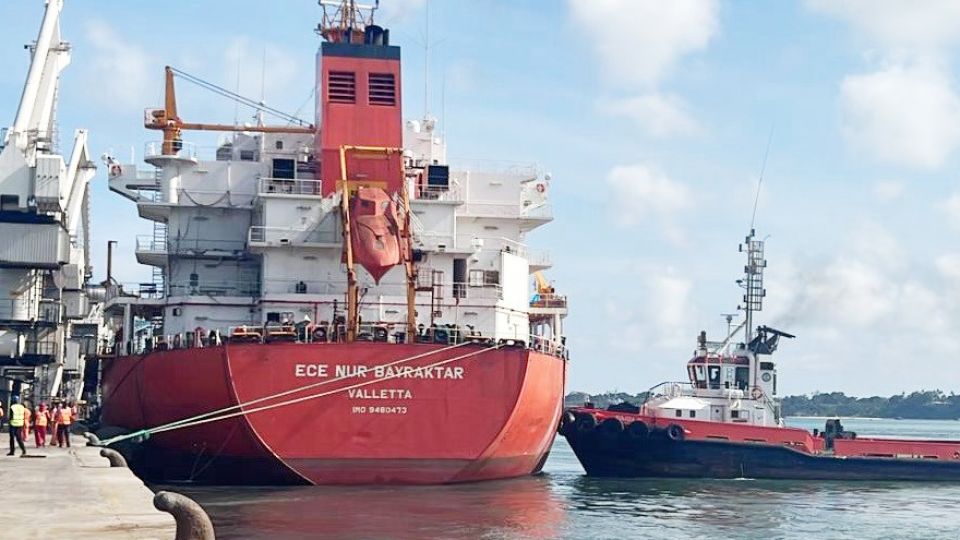East Africa’s main ports of Mombasa and Dar es Salaam have renewed their ravalry in the battle for the region’s market, with Tanzania giving Kenya a run for its money in tapping the transit business.
The two countries which have over the years had a frosty relationship when it comes to business and labour migration, despite both being members of the East African Community (EAC), are keen to outdo one another in handling both imports and exports for the region’s landlocked countries.
With this, heavy investments have gone into their respective sea ports which connect the region to key global markets, supporting international trade. Mombasa for instance provides direct connectivity to over 80 ports worldwide.
The two ports serve the East African Community landlocked countries through two major transit corridors, with the main one being the 1,700 kilometre-long Northern Corridor that runs between Mombasa (Kenya), Uganda Rwanda, Burundi and Eastern DRC.
The other one is the 1,300 kilometre-long Central Corridor which stretched from Dar es Salaam Port into Rwanda, Burundi, Uganda and Eastern D.R. Congo.
The two corridors facilitate export and import activities within the EAC region with a combination of rail, road and lake transportation networks.
Tanzania has in recent years increased its influence in the region, taking at least 10 per cent of the transit business off Kenya’s plate, despite Mombasa remaining the preferred port of use due to efficiency.
“Mombasa and the Northern Corridor is still the most preferred due efficiency which includes vessel turn-around time, a good road network and overall costs but there has been growing competiton from Dar es Salaam in the last two years,” the Shippers Council of Eastern Africa told the Business Standard.
Democratic Republic of Congo is Tanzania’s biggest transit market where last year, 3.7 million tonnes of its cargo went through Dar es Salaam compared to 1.5 million tonnes that Mombasa handled. This was an increase from 3.3 million tonnes the previous year.
Dar es Salaam also handled 1.6 million tonnes for Rwanda, 581, 981 tonnes for Burundi and 113, 630 tonnes for Uganda. Other major markets for Dar es Salaam are Zambia whose 2.3 million tonnes of cargo went through the port and Malawi’s 385, 975, official data shows.
On the other hand, Uganda is Kenya’s biggest transit market with Mombasa handling 7.1 million tonnes for the country last year. This was however a drop compared to 7.3 million tonnes handled in 2022.
During the year under review, Mombasa handled 1.9 million tonnes of cargo for South Sudan, 1.5 million tonnes for DR Congo, 520, 201 tonnes for Rwanda and 18,320 tonnes for Burundi.
About 312, 871 tonnes of cargo destined for Tanzania also went through Mombasa as some traders opted to use the Kenyan port.
To improve efficiency and increase its competitiveness, Tanzania Ports Authority signed a 30-year concession agreement with Adani International Ports Holdings (AIPH), a wholly owned subsidiary of Adani Ports and Special Economic Zone Ltd. (APSEZ), to operate and manage Container Terminal 2 at the Dar es Salaam Port.
CT2, with four berths, has an annual cargo handling capacity of 1 million TEUs and managed 0.82 million TEUs or containers in 2023, estimated to be 83 per cent of Tanzania’s total container volumes.
East Africa Gateway Limited (EAGL) has been incorporated as a joint venture of AIPH, AD Ports Group and East Harbour Terminals Limited (EHTL). APSEZ now the controlling shareholder and will consolidate EAGL on its books.
EAGL in May this year signed a Share Purchase Agreement for the acquisition of 95 per cent stake in Tanzania International Container Terminal Services Limited (TICTS) from Hutchison Port Holdings Limited (and its affiliate Hutchison Port Investments Limited) and Harbours Investment Limited for a purchase consideration of USD 39.5 million (Sh5.1 billion).
Before the deal, TICTS owned all the port handling equipment and manpower. Adani is now operating CT2 through TICTS.
According to Adani, the signing of the concession for Container Terminal 2 at Dar es Salaam Port is in line with APSEZ’s ambition of becoming one of the largest port operators globally by 2030.
“We are confident that with our expertise and network in ports and logistics, we will be able to enhance trade volumes and economic cooperation between our ports and East Africa. We will strive to transform Dar es Salaam Port into a world class port,” said Mr. Karan Adani, Managing Director, APSEZ.
The developments at Dar are now seen to rattle Mombasa with Kenya Ports Authority (KPA) moving fast to ensure it does not lose out to the neighbouring port.
Apart from an aggressive marketing campaign in the transit markets, KPA has embarked on an expansion plan and equipment upgrade, which has increased cargo handling capacity.
It has embarked on plans to implement Phase III of the multi-billion second-container terminal, whose Phase I and II have so far increased the port’s annual capacity to over 2.18 million TEUs.
The first phase of the three-phased project was completed in February 2016 and commissioned for operations in September 2016.
This increased the port’s annual capacity by 550,000 containers with second phase completed in 2022 bringing an additional 450,000 containers.
Phase III is expected to take Mombasa’s capacity to above 2.5 million containers annually.
It is part of the Mombasa Port Development Programme which targets larger vessels, giving the port a competitive edge over Dar es Salaam and Djibouti ports.
KPA managing director, Captain William Ruto, has also been courting leading global container shipping lines and handlers, among them Maersk and Evergreen, to make Mombasa their preferred port of call in the region.
“We want to see Evergreen become frequent callers at the Port of Mombasa and we assure the world that Mombasa has the capacity to handle cargo efficiently and in real-time,” Ruto said.
He has affirmed KPA’s commitment to ensure efficiency and productivity in the port which will among other things, reduce waiting time and also enhance vessel turnaround time as Mombasa remains the gateway to East and Central Africa, serving eight countries including Northern Tanzania and other landlocked countries.
KPA also plans to expand the old terminal at the Port of Mombasa, in addition to the ongoing extension of the second container terminal.
It plans to expand the Old Terminal by 290 metres from the current 790 metres.
According to industry projections, the Port of Mombasa is expected to handle up to 47 million metric tonnes of cargo by the year 2030, from the current 35.9 million tonnes recorded last year.
The throughput was an increase from 33.9 million tonnes the port handled in 2022.
Last year, container traffic rose by 11.9 per cent from 1.49 million in 2022 to 1.62 million.
“The increase was partly due to a 17.6 per cent rise in number of ships handled from 1,561 in 2022 to 1,835 in 2023. The average container ship turnaround time improved from 2.9 days recorded in 2022 to 2.3 days in 2023, an indication of improved port efficiency,” the Kenya Economic Survey 2024 reads in part.
Equally, the average gross moves per ship per hour improved from 32.5 moves in 2022 to 38.8 moves in 2023.
KPA management expects container throughput to grow by 200,000 this year to 1.8 million.
Over the long-term, Mombasa is expected to be handling up to 111 million tonnes, by 2047.





